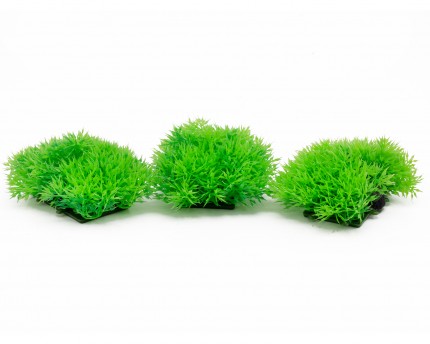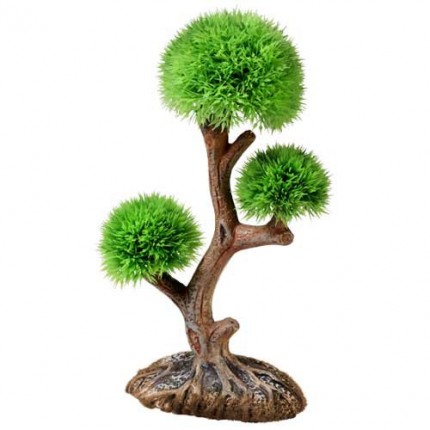Design and structuring with synthetic plants
With the low Plant Mats, which can be cut to size individually or also connected to each other with a plug-in system, the foreground can be beautifully designed. Four different plant replicas provide variety and offer additional layout options. Short grass-like plants of different heights are represented here as well as a variant with somewhat broader leaves. The Plant Ball, which is modeled on the popular moss ball, not only offers a large surface area for bacteria to settle on, but is also readily grazed by shrimp. A good alternative for those who do not want Cladophora algae in the aquarium.
In the middle ground, the Aqua Tree finds its home in two differently planted and differently high variants, as well as lower plants, depending on the aquarium height up to 20 or 25 cm. A small group of the red-leaved Rotala can be used here to introduce a pretty color contrast. A replica of Egeria or broad-leaved Echinodorus also adds variety to the layout. Grass-like structures can be created in the middle ground with Cyperus , Sagittaria or Vallisneria replicas and then continued in the background with the taller Crinum. Another taller plant for the background or for the middle ground in tall aquariums is the Ludwigia replica. It can also be used to create a pretty red eye-catcher in the background. This contrast is particularly beautiful in a small group slightly offset to the right or left of the center.
In combination with roots and stones, a near-natural aquarium layout can be created in which fish and crayfish feel at home.
Avoiding algae growth with plastic plants
If you want to avoid algae growth, the additional use of real plants is still recommended. Fast-growing, high-yielding plants such as Horkraut or Nixkraut can also be left to float on the water surface in aquariums with herbivores; they do not have to be planted in the substrate. Floating plants have also proven to be especially effective in crayfish aquariums as nutrient feeders. With herbivorous fish and snails, the life span of floating plants and floating plants is unfortunately still limited, in this case propagation in a separate aquarium is recommended.


